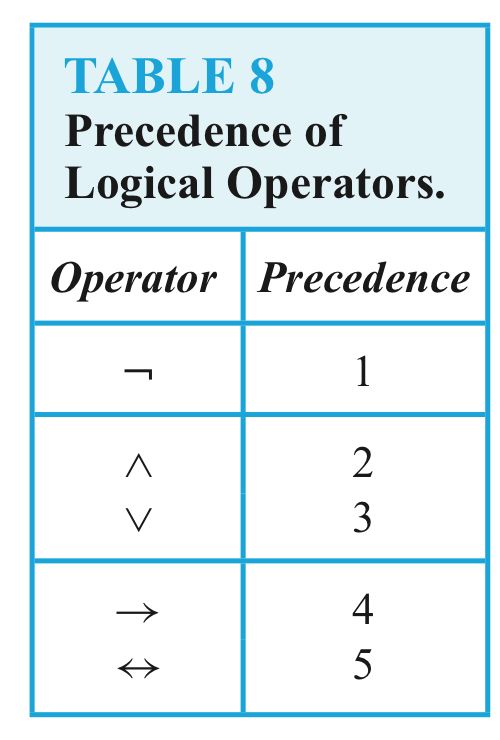propositional variables (or statement variables),
letters used for propositional variables are p, q, r, s, . . . . The truth value of a proposition is true, denoted by T,
if it is a true proposition, and the truth value of a proposition is false, denoted by F, if it is a false proposition.
DEFINITION 1
Let p be a proposition. The negation of p, denoted by ¬p (also denoted by p),is the statement “It is not the case that p.”
The proposition ¬p is read “not p.”The truth value of the negation of p, ¬p, is the opposite of the truth value of p.
DEFINITION 2
Let p and q be propositions. The conjunction of p and q,denoted by p ∧ q, is the proposition “p and q.”
The conjunction p ∧ q is true when both p and q are true and is false otherwise.
DEFINITION 3
Let p and q be propositions. The disjunction of p and q,denoted by p ∨ q, is the proposition “p or q.”
The disjunction p ∨ q is false when both p and q are false and is true otherwise.
DEFINITION 5
Let p and q be propositions. The conditional statement p → q is the proposition “if p, then q.”
The conditional statement p → q is false when p is true and q is false,and true otherwise.
In the conditional statement p → q, p is called the hypothesis (orantecedent or premise)
DEFINITION 6
Let p and q be propositions. The biconditional statement p ↔ q is the proposition “p if and only if q.”
The biconditional statement p ↔ q is true when p and q have the same truth values, and is false otherwise.
Biconditional statements are also called bi-implications.
